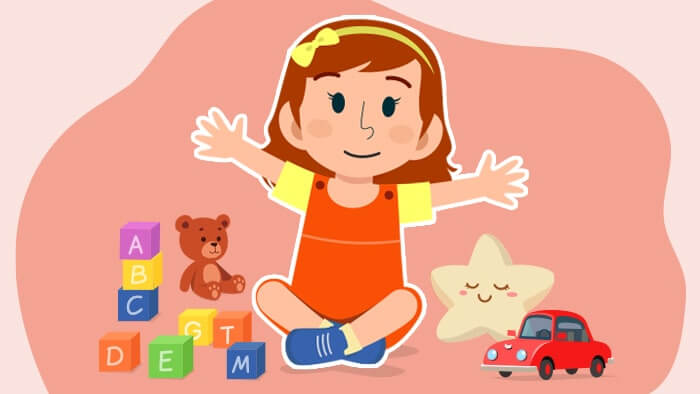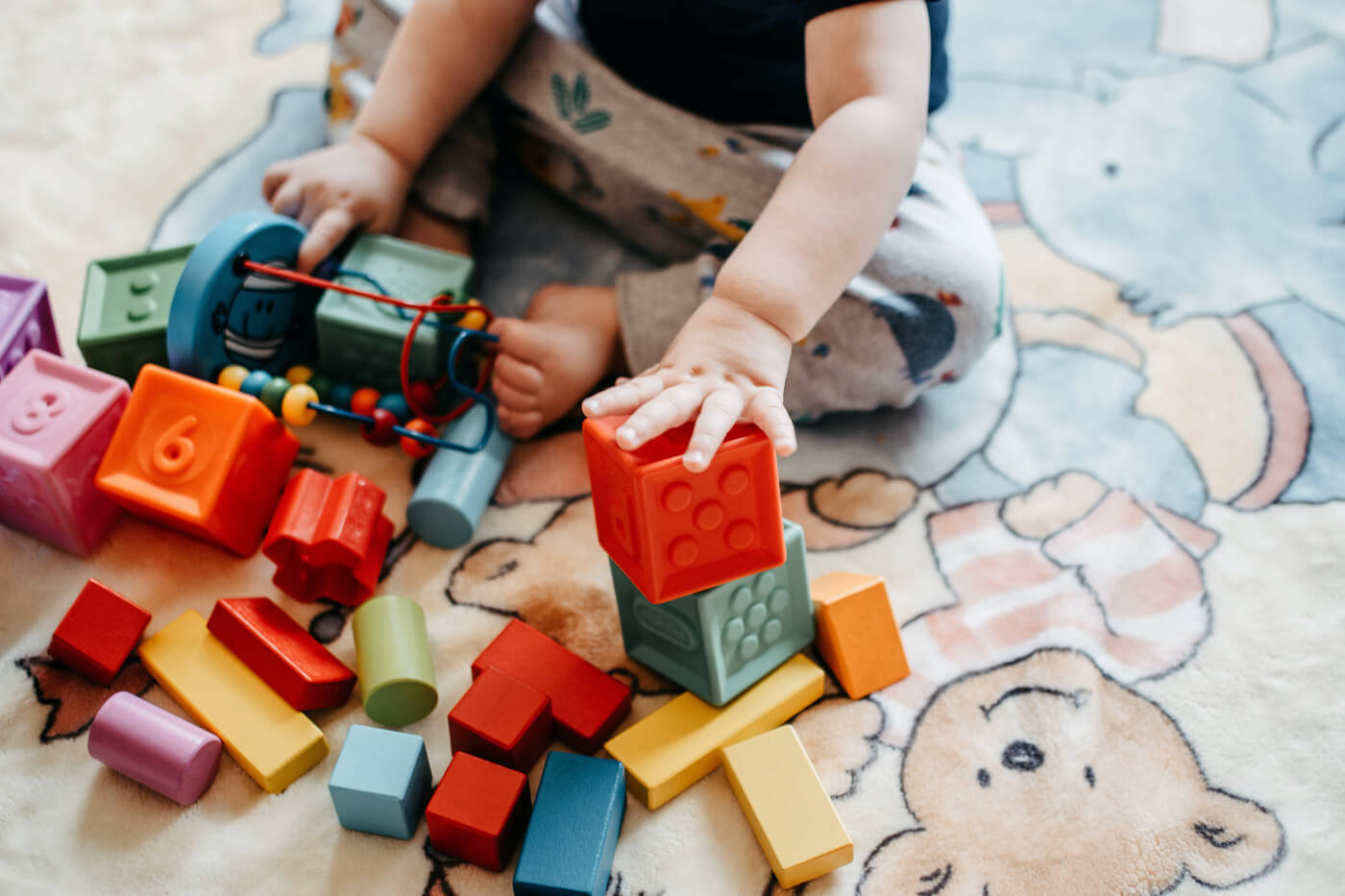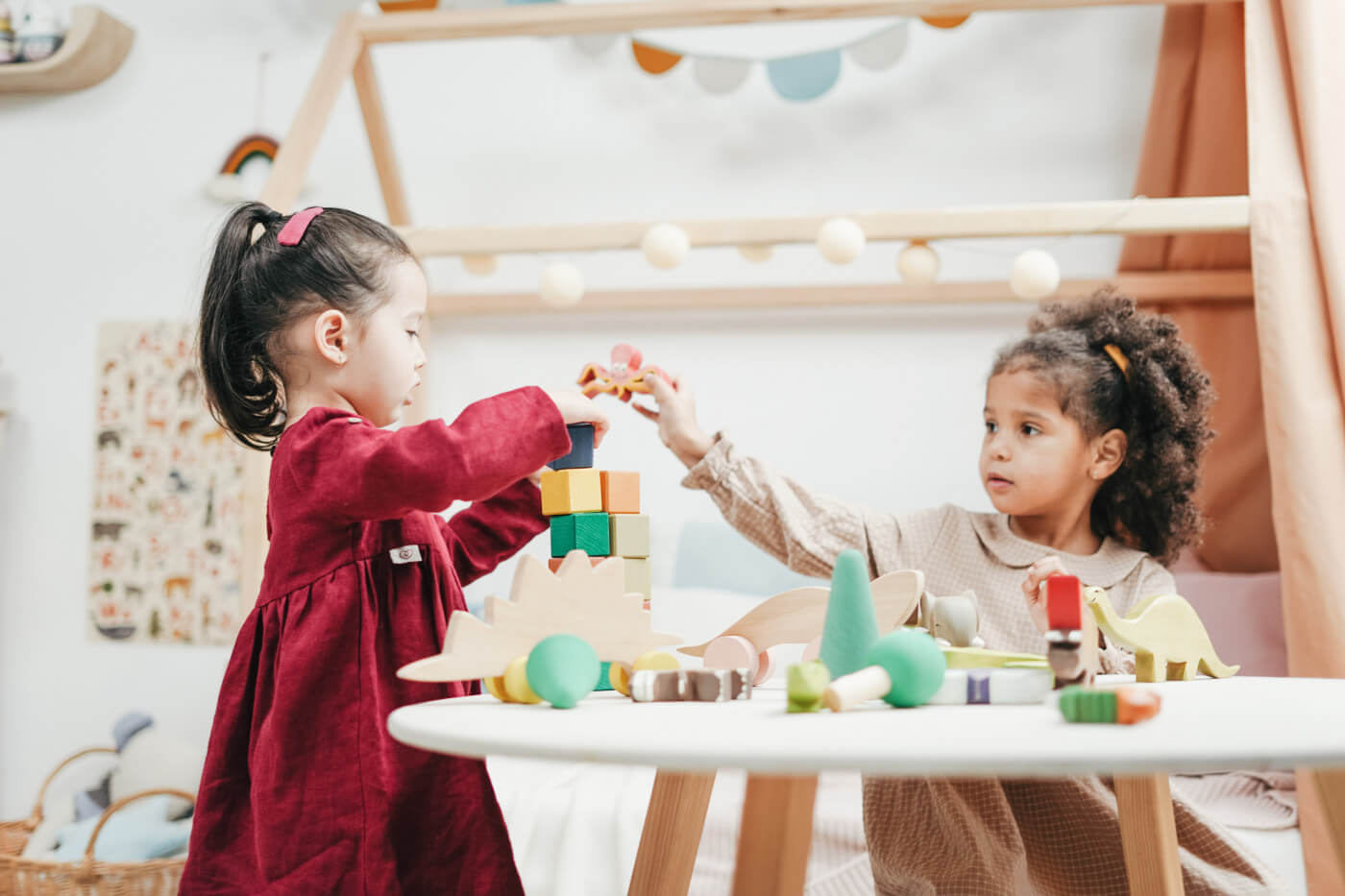Ever wondered why kids lose interest in their toys quickly?
No matter how much you spend or how excited your child is about unboxing the toy, it takes only a few days before the exhilaration wears off.
In the previous article, we uncovered the 10 reasons why kids don’t play with their toys and learned that sometimes, it’s the toy’s fault. They simply do not engage kids enough.
If you hate buying toys your child doesn’t even use, try open-ended toys. We’ll discuss what they are and why they matter in the following texts, so stay tuned!
What Are Open-ended Toys?
The phrase “open-ended toys” is a combination of two words no one thought would fit perfectly to describe the best category of toys for children.
It comprises two concepts: “Open-ended,” which means having no definitive endpoint, and “toy” being a child’s plaything. Together they describe a class of toys that offer limitless possibilities on what kids can do with them.
In other words, there is not a single set way to play with an open-ended toy.
Take a stick, for example. The Museum of Play inducted a stick in the National Toy Hall of Fame on November 6, 2008.
Why?
We all know sticks are no robots, that’s for sure. But unlike toys that move with one press of a button, there are infinite ways a child can use a stick. Be it a wand, a sword, a bat, a flagpole — you name it.
What makes the stick count is not the intricate features it possesses but its immense use to support a child’s open-ended play!
In essence, open-ended toys are the ones that foster a child’s creativity, critical thinking, and imagination. And during open-ended play, 90% of the input comes from your child, while only 10% comes from toys themselves. So your child remains in control of the playtime, not the toy.
Why Do Children Need Open-ended Toys?
A child’s mind is meant to do four primary things:
-
Learn
-
Discover
-
Explore
-
Create
Open-ended toys align with how your kid’s mind is supposed to function. These toys offer opportunities for your child to understand how the world works while leaving room for their creativity and imagination to shine through.
Open-ended vs. Close-ended Toys
Now that we’ve understood what are open-ended toys, it’s time to differentiate them from their exact opposite — close-ended toys.
Close-ended toys are described as “one and done” or “single-serving use” because of the little things a child can do with them. They are typically enjoyable at first glance but drastically lose their value after a short while.
A talking robot is only exciting until you discover every speech it says. There is no extra space left for a kid’s imagination and creativity with close-ended toys like this.
But we can’t deny that both types of toys have their merits.
Open-ended toys cultivate the artist and adventurer within your child, while a close-ended toy trains their sense of order and concentration.
But for dynamic souls such as children, there should always be room to explore and discover with no holds.
Only with open-ended toys can your kid achieve this feat, along with other critical benefits that we’ll discuss below!
Benefits of Open-ended Toys
1. Encourages exploration and engagement with new ideas
Children are naturally curious. Those traits are the principal driver behind their insatiable desire to understand how the world works.
Open-ended toys offer a playing field where they can freely explore their surroundings. Your child can test their theories, hypothesize answers, fail, try again, and look for practical solutions on their own. There is an infinite number of ways to play, and they are up for your child’s exploration.
This is the beauty of open-ended toys. Neither we nor the toys dictate the playtime. Instead, your kid reclaims the rightful control over how they want to play rather than the toy telling them what to do.
2. Nurtures their cognitive development and creativity
Open-ended play supports your child’s learning more than any other form of play. The thing about open-ended toys is that playtime is active, unlike close-ended ones where there is a set way to play.
Through open-ended toys, your child can act independently, learn to think on their feet, make better decisions, and respond accordingly to situations.
The level of freedom from open-ended toys encourages children to explore beyond the confines of their understanding.
With the right kind of open-ended educational toys, your child can also develop a passion for specific scientific fields. Say, a portable kids microscope can spark an interest in microbiology, or an electric circuit toy kit can lead to a future career in electrical engineering.
3. Develops better social skills and relationships
The lack of rules is one feature that open-ended toys have over close-ended ones. But this absence of order is not a drawback, rather an advantage, especially when a group of children plays with open-ended toys together.
Despite the potentially clashing ideas of kids on how they should play the game, children learn to respond appropriately and complement their inputs for the sake of playtime.
They learn to understand better social cues like facial expressions, body language, and tones of voice. Plus, all the kids can band their ideas together to form cohesive gameplay with their playmates.
Everyone’s input matters, and they collectively learn how to govern the playtime even without adult supervision.
4. Trains them to be independent and enjoy their own company
While learning to play with others is crucial, being confident in one’s own company matters just as much. Open-ended toys help develop your kid’s social skills and independent sense of security.
There will be moments in your child’s life when they feel alone. But, playing with open-ended toys allows them to be at peace with independence and confidently enjoy their solitude.
Open-ended toys help replace your child’s dependence on others with a mindset that knows how to value their own thoughts and amusement, even when alone.
Because of this, when your child makes friends with others, it will be because your child likes them, not simply because your kid yearns for others’ company.
5. It offers a relaxed environment where kids can freely make mistakes
Self-confidence is a crucial trait that we must establish while children are young. Yet, frequently, fear is the limiting factor that blocks a kid’s confidence.
As observed in close-ended toys, rules that define what’s right or wrong restrict a child from freely understanding how things work. It strips away their freedom to take risks, understand cause and effect, and explore possibilities like their natural curiosity dictates.
Open-ended toys feed a child’s excitement to learn and discover solutions in a safe and supportive environment. In addition, these toys can help build their self-confidence and empower them to be bold in expressing their thoughts and opinions — characters that are appreciated in the workplace!
6. Captures their attention longer
More ways to play with a toy mean more time spent playing.
Giving open-ended toys to your child allows them to explore unlimited methods to entertain themselves even without your supervision.
This means that your toddler can be busy playing while you focus on other tasks or errands. So you can clean around, prepare meals, and work peacefully without a child saying “I’m bored!” every 10 minutes.
7. Buy less, play longer
On top of capturing their attention for more extended periods, buying open-ended toys also means you save more money in the long run.
These open-ended toys are typically made with high-quality materials, so you won’t have to worry about kids damaging or breaking them any time soon.
Not only will the toys keep your kids occupied, but they’ll also last a lifetime if stored properly. It’s bad enough that you keep buying toys every time only to find them unused after a brief period.
With open-ended toys, you prioritize quality over quantity without compromising the learning children can get from them!
8. Covers a variety of age groups
Depending on the toy, open-ended toys can also cover different age groups. Although some toddlers’ toys may not be applicable for middle schoolers, there are other toys that kids of all ages can enjoy playing with!
For example, table-top microscopes or handy portable microscopes are excellent options for exploring micro-mysteries in the great outdoors. Despite having only one way to use them, the world is wide enough for your child's discovery.
Aside from that, your child can also use magnetic tiles and building bricks like Lego to build structures of all kinds.
Whether toddlers or teenagers, open-ended toys are the best kind of toys to get your kid.
Fewer Features Mean Better Quality Play!
The less feature a toy has, the better it is for your child. Fewer functionalities mean there is much room left for your kid to discover, explore, imagine and create!
Open-ended toys should be the golden standard for every kid’s toy. When you expose your child to the right kind of toys, they will eventually reap all the benefits listed here.
If you’re looking for an open-ended toy that’s also educational, the STEMscope kids’ microscope is a great place to start. Beat the screen culture, instill a hunger for STEM learning, and cultivate the curiosity to explore the world with this portable device.
Learn more about the STEMscope and other toys by visiting our complete STEM toy catalog.




